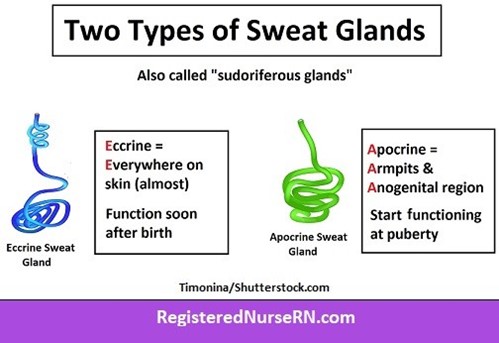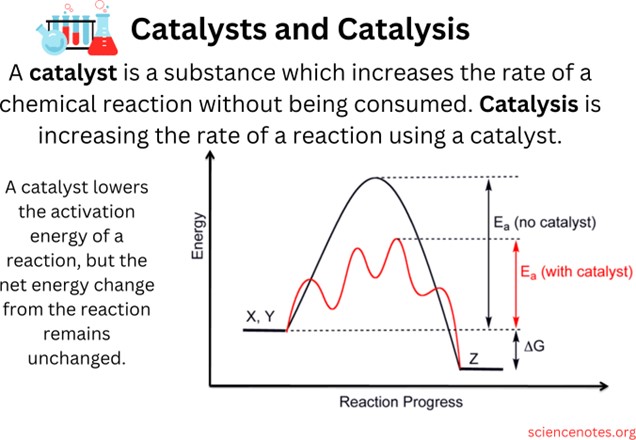Which of the following is a component of the integumentary system that secretes pheromones?
Fossa ovalis
Seminiferous tubule
Dermal papilla
Apocrine gland
The Correct Answer is D
The apocrine gland is a component of the integumentary system that secretes pheromones. Pheromones are chemical signals that are released by an individual and can affect the behavior or physiology of other individuals of the same species. The other options are not components of the integumentary system that secrete pheromones. The fossa ovalis is a depression in the interatrial septum of the heart, the seminiferous tubule is a structure in the testes where sperm are produced, and the dermal papilla is a structure at the base of a hair follicle that provides nutrients to the hair.

Nursing Test Bank
Naxlex Comprehensive Predictor Exams
Related Questions
Correct Answer is B
Explanation
The result of using a catalyst in a chemical reaction is that the reaction is completed in a shorter amount of time. A catalyst is a chemical substance that affects the rate of a chemical reaction by altering the activation energy required for the reaction to proceed. This process is called catalysis. A catalyst provides an alternative pathway for the reaction, one that has a lower activation energy than the uncatalyzed pathway.
The other options are not correct because they do not accurately describe the result of using a catalyst in a chemical reaction. A more desirable product is not necessarily formed, a greater amount of heat energy is not necessarily released by the reaction, and the yield of the product is not necessarily increased as a result of using a catalyst.

Correct Answer is A
Explanation
Nuclei. Genetic information describing the characteristics of an organism is found in the nuclei of its cells. The nucleus contains the organism's DNA, which carries the genetic information that determines its traits.
B. Membranes are structures that surround and enclose cells and organelles, but they do not contain genetic information.
C. Cilia are hair-like structures that protrude from the surface of some cells and are involved in movement, but they do not contain genetic information.
D. Ribosomes are organelles that are involved in protein synthesis, but they do not contain genetic information.

Whether you are a student looking to ace your exams or a practicing nurse seeking to enhance your expertise , our nursing education contents will empower you with the confidence and competence to make a difference in the lives of patients and become a respected leader in the healthcare field.
Visit Naxlex, invest in your future and unlock endless possibilities with our unparalleled nursing education contents today
Report Wrong Answer on the Current Question
Do you disagree with the answer? If yes, what is your expected answer? Explain.
Kindly be descriptive with the issue you are facing.
